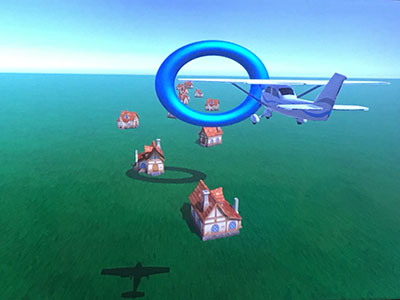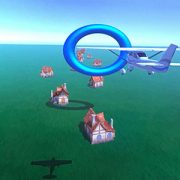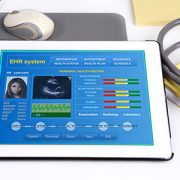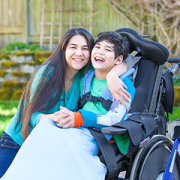Pedbot’s next step – Home-based therapy

Pedbot’s home version adapts the same airplane-themed video game to a smaller therapeutic platform that is more affordable to build.
The novel ankle rehabilitation robot built at Children’s National to help children with cerebral palsy build ankle strength and control through video gaming is taking a big step forward. Engineers have created a smaller, more affordable version of the robotic platform using 3D printed parts, to explore the effectiveness of a home-based therapy program.
“We’re seeing preliminary success in our trial for in clinic use of the Pedbot. Now we’re hoping to see if making the technology accessible at home means that 1) Kids use it more often and 2) More frequent, regular use over time leads to better range of motion,” says Kevin Cleary, Ph.D., the Sheikh Zayed Institute for Pediatric Surgical Innovation’s bioengineering technical director and engineering lead for Pedbot.
Pedbot’s video game, designed by software engineer Hadi Fooladi, M.S., allows kids to pilot an airplane through a series of hoops at varying speeds as determined by the therapist and programmer. The game isn’t the only thing that’s unique about this therapeutic robot, however.
Just like the clinic version, the home model moves in three translational directions (x, y and z) and rotates about three axes (the x, y and z axes), similar to the movement of a flight simulator. The result is a robot that helps the patient exercise across a greater range of motion and build muscle strength in a way that more closely mimics real-life ankle function.
Pedbot Home potentially eliminates an additional major therapeutic barrier – the clinic appointment.
“The great thing about Pedbot is you’re constantly working to reach a moving target, and the therapist can vary the movement type as much or as little as needed for each patient,” says Catherine Coley, DPT, a physical therapist at Children’s National who is a member of the Pedbot development team. “We think the home version might make it easier for the child to succeed with a long term therapy program by removing the need for repeat clinic visits.”
“What if a child could come home from school and do their therapy at home after dinner? Would doing it every day for 20 minutes benefit the child more than just coming to see us once or twice a week for an hour? Can we make it easier for our patients to cooperate and follow through with therapy homework? These are some of the questions that we hope we can answer during our trial for the home version,” says Sally Evans, M.D., division chief of Pediatric Rehabilitation Medicine at Children’s National and clinical lead for the project.
The cross-functional Pedbot team includes engineers Reza Monfaredi Ph.D. and Tyler Salvador, B.S., as well as additional physical therapists, Stacey Kovelman, P.T. and Justine Belchner, P.T., and Sara Alyamani, B.A. Future expansions will include the addition of electromyography measurements in collaboration with Paola Pergami, M.D., Ph.D. and incorporation of other patient populations with Beth Wells, M.D.
Pedbot Home is currently being piloted in the home setting, with the goal of enrolling additional families to participate in a trial within the next year. The work is supported by a $500,000 federal grant from the Department of Health and Human Services’ National Institute on Disability, Independent Living, and Rehabilitation Research.











